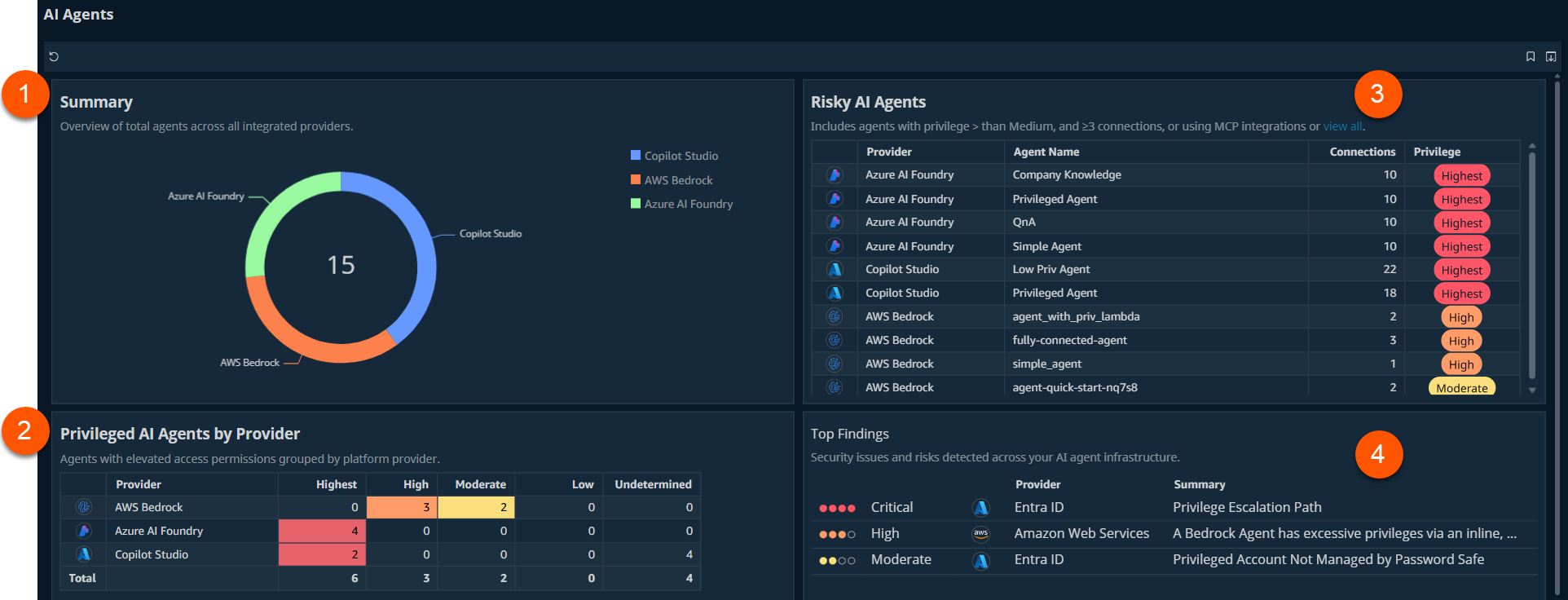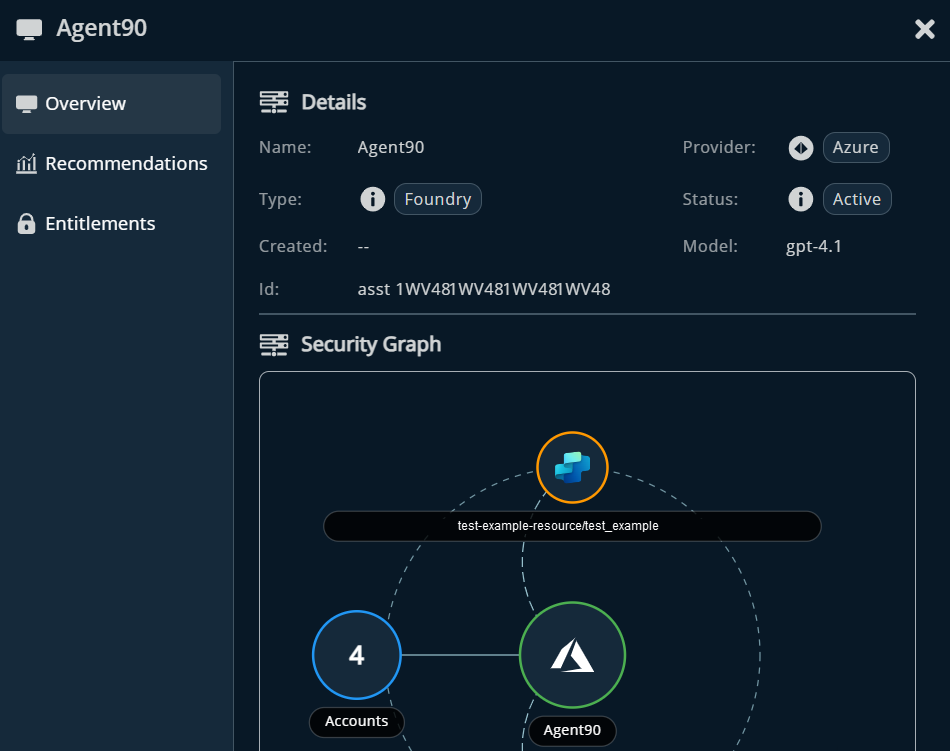AI agents | Insights
What is the AI agents page?
The AI Agents page provides inventory visibility of existing AI agents, including details like:
- Which agents have a risky level of privilege based on their direct privileges.
- Tools the agents can access.
- Top findings and recommendations.
How is it helpful?
The AI Agents page displays a comprehensive view of all your providers' AI agents.
The high-level initial view lets you see at a glance all AI agents in your environment and where anomalies exist that you can troubleshoot and remediate.
The AI Agents page

- Summary
Displays a visual of every AI agent detected across your connected platforms. - Privileged AI Agents by Provider
This tile displays privileged levels across your supported platforms. Highlights agents with elevated access which may have more permissions than necessary. Select a provider name to drill down to the Agent Inventory page. - Risky AI Agents
Highlights AI agents that may pose a security risk, those with elevated privileges, complex access paths, or connections to sensitive tools like MCP servers. These agents often operate with more power than they need, and without proper oversight, they can introduce vulnerabilities.
Drill down to see the recommendations and entitlements on that AI agent. - Top Findings
Displays critical and high severity issues like agents with excessive privileges or risky configurations. The findings are prioritized with actionable insights that help your team move fast and fix what's broken.
Investigate AI agents
While the AI Agents page provides a high-level view into all AI agents in your environment, you can see more details and insights for each agent.
-
Sign into app.beyondtrust.io.
The BeyondTrust Home page displays. -
From the top left of the page, click
 > Insights > AI Agents.
> Insights > AI Agents.
The AI Agents page displays. -
On the Risky AI Agents tile, select an agent that you'd like to see more details on.
The agent panel displays.
The panel adapts based on the agent’s provider and configuration and may include:
- Details: Common metadata (e.g., name, status, model) plus provider‑specific fields (e.g., Azure subscription details) for quick identification and context.
- Security Graph: Visualizes the agent’s relationships showing which accounts can access it and how it connects across the environment. The graph can help you identify privileged chains or unexpected exposures.
- Agent Privileges: Lists permissions granted to the agent, helping teams spot overprovisioned or risky access.
- Who Can Access This Agent: Surfaces roles, entities, and even other agents that can invoke it highlighting potential cascading paths to privilege.
- Tools: Shows callable tools such as MCP servers, Power BI integrations (for Copilot), or custom/third‑party actions (for Agentforce via AgentExchange).
- Knowledge Sources: The data sources shaping how the agent works such as internal documents, databases, or third-party content. The quality and sensitivity of these sources directly influence the agent's behavior. If it's grounded and outdated and or confidential material, it can make decisions that are inaccurate or worse, expose sensitive information.
- Instructions: Displays the prompts or task definitions that guide the agent’s behavior.
- Recommendations: Highlights prioritized security recommendations based on privilege level and severity.
- Entitlements: Enumerates entitlements with privilege level and type to assess exposure and control.
Updated about 1 month ago
